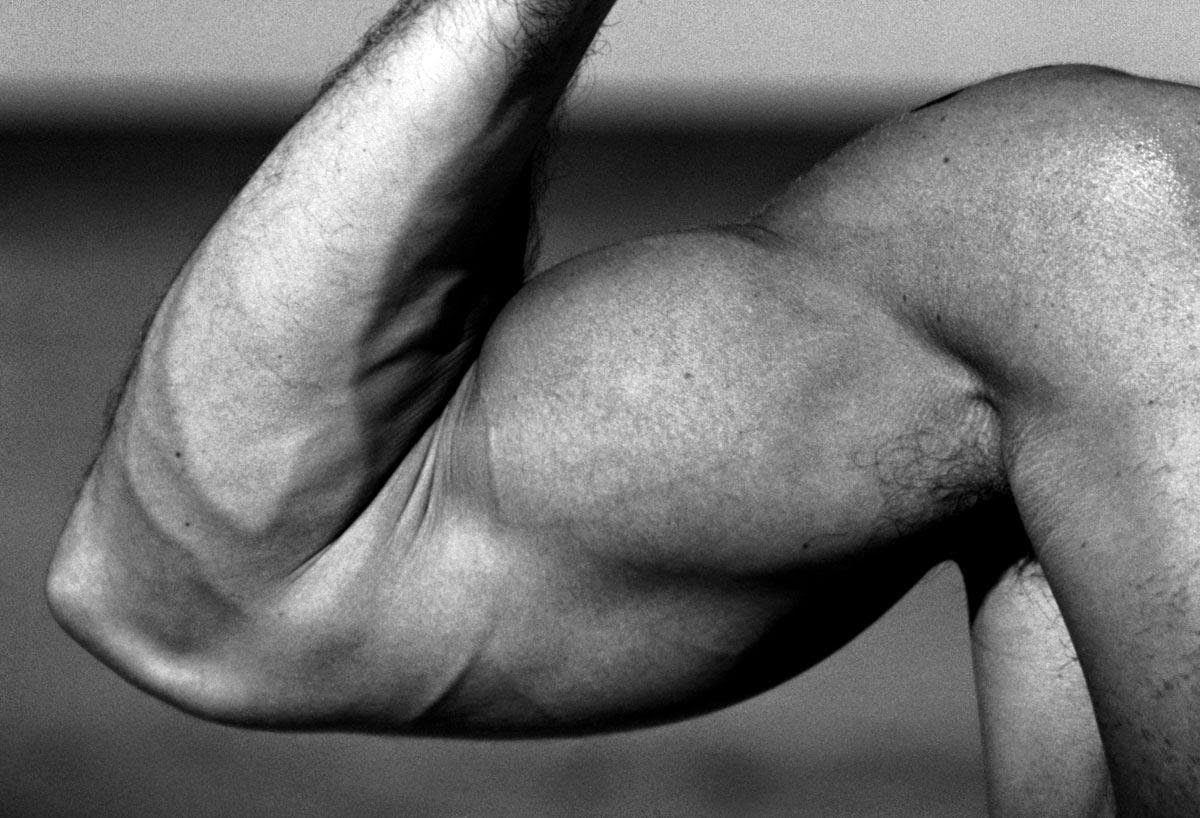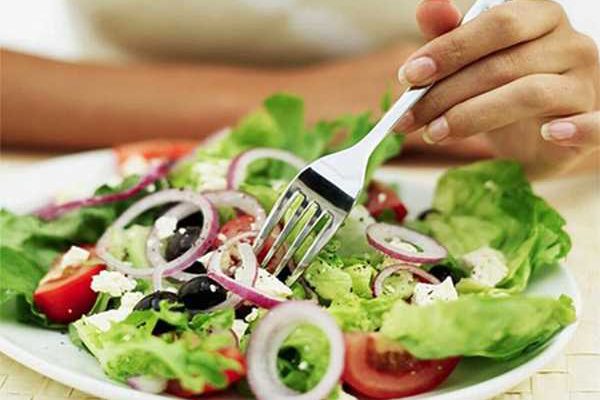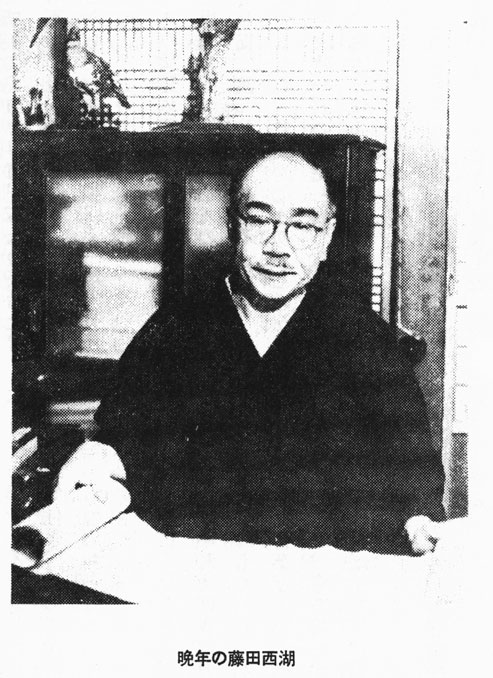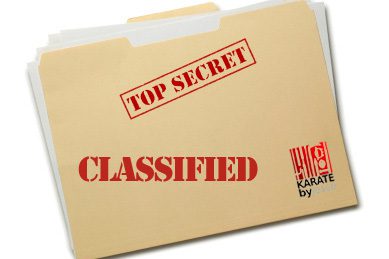We are all looking for shortcuts.
Constantly.
I mean, just take a look at the cover of any randomly selected magazine the next time you’re out shopping, and you’ll quickly notice that it’s filled with promises of “better” stuff, in an “easier” or “faster” way. It seems like as long as you follow “5 Super Easy Ways To…” or “6 Hot Tips For Building Your…” or “3 Ultra Fast Ways of Achieving…” everything will be all right.
We want stuff, and we want it now.
Preferably without effort.
But… are there really any shortcuts to success? Or is it all just bullcrap?
For instance, how can a wiry old karate master break a stack of boards?
Magic, skill, or simply pure awesomeness? Shouldn’t his hand shatter? To most onlookers, it’s nothing short of “amazing”. Indeed, have a look at Mr. Shinjo right here and you’ll have to agree that he is a hard man.
Hard, hard man…
So what’s his shortcut? What celebrity diet did he go on to withstand the forces on his bones as he breaks baseball bats and bricks? What “super fruits” does he eat to be able to break his stack of breakfast boards every day? Huh?
None.
(I think!)
He has simply been training for a very long time. Breaking stuff is a skill he has developed over time, and his body has adapted to it throughout the years. The same goes for skinny 150-pound Russians who bench press 500 pounds, or tiny gymnasts who perform the iron cross on the rings, with bodies rigid as steel beams. They might not always look that hard, but when push comes to shove… they are hard.
This is what’s known as the skill of strength.
Because, strength is a skill.
Sure, most regular people don’t think it is, but it is.
Strength is the skill to tense one’s muscles harder. That’s why strength is so important for speed, explosiveness and yes, even flexibility. No matter what goals you have, be it getting stronger without putting on an ounce of weight, getting massively muscled and powerful, becoming the next Karate World Champion, breaking bricks or simply toning up – learning the secrets of the skill of strength will help you get there faster.
Because when it comes to strength, there are shortcuts.
A lot.
I just call them “secrets” to make you micturate in your pants a little.
And no, I’m not talking shortcuts in the sense of foreign substances injected in your blood stream. I’m talking small tricks and techniques that you can easily incorporate in your current technique to literally make yourself stronger in just seconds. Things that experts and masters like Shinjo have known for a very long time, even though they might not always teach these (because they don’t know themselves, or because they want to keep it a secret? No idea.)
Believe me, this ain’t no hocus pocus.
So just free your mind for a second and give the following high tension techniques a shot… and you will see an immediate jump in your strength. 100% money back guarantee, lifetime warranty, try 1 get 2 for free, unlimited 90-day refund etc etc…
And the best thing? If you practise kata Sanchin, you already know them all.
Here we go:
Secret #1: Irradiation

This one is the easiest. It’s actually ridiculously easy. Childish, even.
Here’s what you do: Perform a set of one-arm strict curls with a dumbell that allows about five solid reps. Make sure that your elbow stays at your side and does not drift back. If you don’t have a dumbbell, do something else instead, basically any exercise that uses one arm.
- Note how many reps you have done (in good form).
- Rest for 5 min (important for the recovery of your CNS [central nervous system]).
- Do another fiver but with one difference: on the way up crush the dumbbell to sand.
At this point you cannot help noticing that your arm has suddenly gotten a jolt of extra energy, as if your tensing forearm has sent some juice up into your biceps.
Which is exactly what has happened.
Whenever a muscle contracts, it irradiates nerve force around it and increases the intensity of the neighborhood muscles’ contraction. Irradiation is one of the so-called Sherrington Laws, and its effect is strongest in your hands. Doing a knuckle pushup? The same thing applies. Squeeze your fist until it whitens. You are bound to do a few extra reps.
Dead easy.
(“And he calls this a ‘secret’?! I want a refund!”)
To examine more closely how this works, make a fist. A super tight fist! Note that as you grip harder and harder, the tension in your forearm overflows into your upper arm, and even your shoulder and armpit. That’s pure irradiation, baby. You will increase your strength in any upper body exercise by strongly gripping the dumbbell, the barbell, the pullup bar, the floor, your opponent etc. in this manner.
Admittingly, pushing exercises take some knack – but in the pulling ones the effect is immediate. Experiment with the force of irradiation in other body parts too, like your legs (stances) when doing, for example, kata Sanchin.
Indeed, the masters knew this “secret” a long time ago…
Secret #2: Bracing

Look, a decent arm-wrestler loads all his muscles with tension just before the ref yells “Go!”, but a top arm-wrestler will load even before he grips up with his or her opponent.
Compare this to a beginner, who waits for the referee’s command to pull before “turning on” his biceps, as he finds himself hopelessly pinned without even knowing what hit him.
We call this the power of bracing.
According to Russian sports scientists, isometrically tensing your muscles before a dynamic contraction can improve your performance by up 20% (Verkhoshansky & Siff, 1996). Just imagine facing an opponent who knows this! You are already at a 20% disadvantage before the fight!
Dang!
This bracing technique is one of the secrets of gymnasts’ amazing strength. Note how an elite gymnast will tense his body before he grabs the rings or some other apparatus instead of waiting for the load to be upon him. He is reminding his body of the skill it is about to perform, and physically bracing himself for the task.
So here is what you do: Before picking up a heavy weight you are about to curl, take a nice breath and tense your whole body, especially your midsection. Kind of as if you are about to do a plank. Then keep the tension for the duration of the set. And that’s it.
You’re about to do some heavy bench pressing? Nemas problemas. Just tense up your whole body, from your fingers to your toes, and take a big breath before you have even unracked the bar. Don’t lose that tension while you are positioning the bar over your chest and later lowering and lifting it.
Done!
(Side note: Have you ever seen weightlifters “sipping” in air? That’s because they are busy tensing up all that muscle juice. So if you must breathe, breathe very shallow, and “sip” air, to keep the tension. This you will of course recognize from the Okinawan style of Uechi-ryu Karate, which has perfected this trademark “sipping” breathing technique.)
Oh, and if you didn’t notice, this we generally practise in kata Sanchin.
Secret #3: Successive Induction

Successive induction… The mere sight of the term tells us this is some serious stuff.
According to this law, a contraction of a muscle—say, the triceps—makes its opposite muscle—in this case, the biceps—stronger than usual for a short time afterwards.
(In geek speak: an agonist is facilitated by the preceding contraction of its antagonist.)
To make it simple, let the previous one-arm bicep curl be the testing range of the effects of successive induction. We will keep practicing irradiation (#1) and bracing (#2) on the way up… but also add successive induction (#3) on the way down.
Here is your new trick: Instead of lowering the dumbell with the braking strength of your biceps, try to push the weight down with your triceps. Push it away from you. Of course, you will still have to keep your biceps tensed as well, because that’s how our bodies work, but you are guaranteed to squeeze out an extra rep or two with this technique! And these reps will be super strict because now you have two “motors” to control the weight instead of one.
The technique also dramatically reduces joint stress.
It is perhaps easier to apply this “active negative” technique to a bench press.
First, cramp your pecs. Then without relaxing them, “row” the barbell into your chest while slightly forcing your chest out to meet the bar. In addition to making you stronger through activating your muscles more intensely and making a better use of elastic energy, active negatives will be of tremendous psychological help on heavy attempts. I mean, who haven’t seen big bodybuilders tentatively feel their way down when trying a max bench or squat, ending up too fatigued (and psyched out!) to come up again.
Result: massive fail.
Don’t be that guy.
4. Power Breathing

Apparently, Bruce Lee used to say that martial arts rely more on “breath strength” than “body strength”.
Indeed, cranking up the “breath strength” will boost the “body strength” pretty effectively. Enter the pneumo-muscular reflex (Zatsiorsky, 1995). The effect of breathing patterns and the intra-abdominal pressure (IAP) on strength is oddly ignored by most Western strength training authorities, yet compressed breathing or “power breathing” is one of the most powerful ways of increasing muscular strength in existence!
Hey, did I mention Sanchin yet?
Here’s a thought experiment for you: Think of your brain as a music player. Now think of your muscles as speakers. Where do you think the amplifier is?
In your stomach.
Special “baroreceptors” in your body measure the intra-abdominal pressure and act as the volume control knob. When the IAP bottoms out, the tension in all your muscles drops off. So use your breathing to heighten the internal pressure, making your nervous system more excited. This will make the nerve cells (of your muscles) become “superconductors” of the commands from your brain. So by cranking up the IAP volume knob you automatically get noticeably stronger, in every muscle of your body – in any exercise!
That’s the power of breathing.
Ever done the zercher squat? I used to do them ass to grass. When I did my heaviest attempts (~100% RM), the pressure sometimes made me feel like my stomach was about to pop like a balloon. If I hadn’t used Sanchin breathing (“power breathing“), I would quickly have become a pool of meat and blood under that bar.
Scary, yet so fascinating…
Of course, breathing can be done in different ways. Hissing, grunting… it’s pretty individual. Another Russian maniac experimenter, Vorobyev (1977), determined that both holding one’s breath and groaning increases strength. Screaming is not bad either. According to research by Ikai and Steinhaus (1961), subjects who shouted during exertion got a respectable 12.2% strength boost!
Kiai, anyone?
Remember that if you are serious about your power breathing, work on you inhalation as well as exhalation. Most people forget that part. Always inhale through your nose rather than mouth and attempt to draw the air low into your belly. Google the concept, or check The Double-Edged Sword – Sanchin, for some quick, easily digested, info.
That said, high tension and power-breathing techniques are still not appropriate for people with heart problems or high blood pressure.
Consult a physician.
________________________________
And that’s there.
4 seemingly super simple, yet pretty unknown, techniques (shortcuts!) to increasing the skill of strength in just a few seconds. Feel free to apply it to whatever you want.
And the best part of it all?
The kata Sanchin teaches us all of it.
Hey, there’s a reason it’s called the “strength training of Karate”! And if you don’t practise Sanchin, don’t worry, it’s never too late to start.
Sometimes you need to climb another mountain to see your own mountain better.



19 Comments